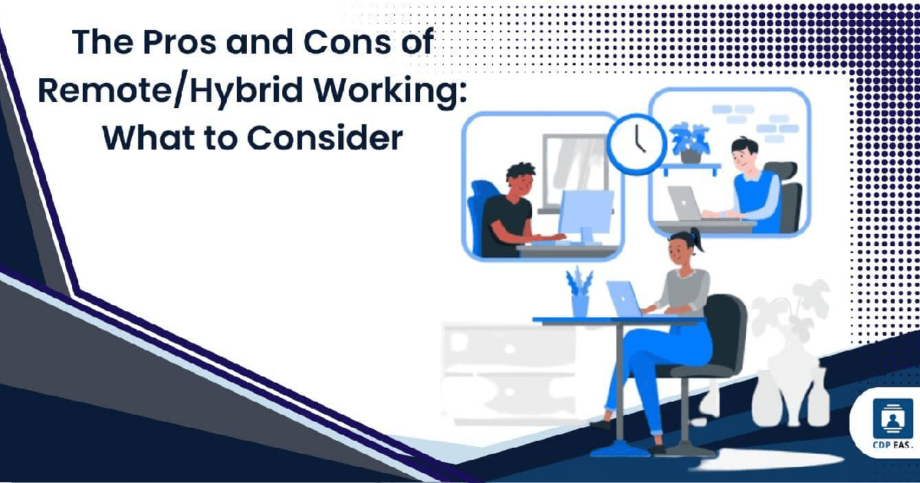Remote and hybrid work arrangements have become increasingly popular in recent years, and even more so in the wake of the COVID-19 pandemic. While there are many advantages to remote and hybrid work, there are also some potential drawbacks to consider. Here are some pros and cons to consider when evaluating whether remote or hybrid work is right for you or your organization:
Pros of Remote/Hybrid Working:
1. Flexibility: One of the biggest advantages of remote and hybrid work is the flexibility it offers. With the ability to work from anywhere, employees can better balance work and personal responsibilities, leading to increased job satisfaction and improved mental health. Using CDP’s EAS, employer and employees can determine the working hours and adjust them accordingly
2. Cost Efficient: For employees, remote work can save on commuting expenses and may also allow for a more affordable cost of living in areas where housing is cheaper. For employers, remote work can save on office rent and utilities.
3. Increased productivity: Some studies have shown that remote workers can be more productive than those working in a traditional office setting, in part because they are less likely to be interrupted by coworkers or office distractions.
4. Expanded talent pool: By allowing remote work, companies can expand their hiring pool beyond a specific geographic area, giving them access to a wider range of talent.
Cons of Remote/Hybrid Working:
1. Isolation: Remote work can be isolating, particularly for employees who are used to working in a collaborative environment. It can also be difficult to build team culture and camaraderie virtually.
2. Reduced work-life boundaries: While remote work can provide more flexibility, it can also make it harder to separate work and personal time, leading to burnout and decreased productivity. With CDP’s EAS, employer can track and fence the GPS location of the employee, making sure the work goes on without unnecessary breaks.
3. Technological challenges: Remote work relies heavily on technology, which can be a challenge for some employees who may not have access to high-speed internet or the necessary tools to work remotely.
4. Management difficulties: Managing remote or hybrid teams can be more difficult than managing in-person teams, requiring more intentional communication and management strategies. You need a robust employee attendance system like CDP’s EAS, that offers many features and facilities to organize remote working dynamic.
It’s important to carefully consider the pros and cons of remote and hybrid work, both from the perspective of the individual employee and the organization as a whole. While remote and hybrid work can offer many benefits, it’s important to be mindful of the potential challenges and to proactively address them to ensure success.




